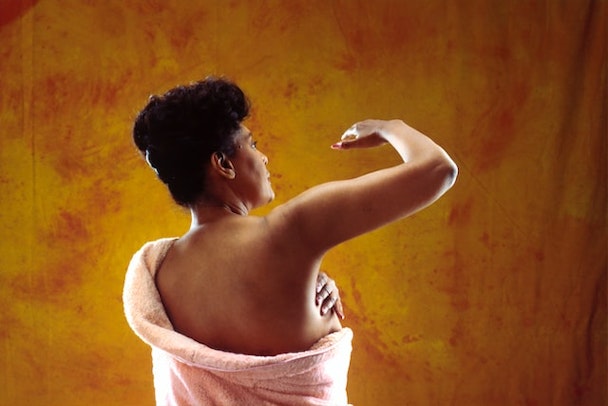Health advertising is shifting the balance of creativity – here’s what we can learn
Health creativity has come a long way, says Natxo Díaz, chief creative officer at VMLY&R Heath Spain.

This week, women in Spain campaigned for faster access to breast cancer treatment thanks to an ad campaign / Image via Unsplash
This week, a group of brave women with terminal breast cancer will take center stage in the Spanish Parliament to urge faster approval of life-enhancing medicines. Their steely determination to instigate change ultimately earned them their starring roles. But, as I’ll explain later, advertising played a big part in helping them achieve this incredible platform.
10 years ago, I was a one-man personal cure for insomnia. I only had to tell people I worked in pharma advertising and their eyes would quickly glaze over. Back then, health was unfairly considered a creative backwater; heavy on regulation and light on imagination. When consumer creatives looked at health, they didn’t believe they could learn from it, let alone work in it – until now.
Now, everything’s changed. Stirred by Covid-19, the world’s woken up to the importance of health communications. Today, health advertising isn’t just mainstream, it’s being celebrated and rewarded – and everyone wants to work on it.
Advertisement
Interest is being driven by society’s growing desire to do work that changes lives. Health comms provides the chance to do something meaningful for humanity. For me, it’s the greatest creative opportunity of all. Because changing lives is a career ambition, we routinely achieve it every day.
That authenticity of purpose is the engine for creativity that’s powering critical acclaim for our work.
But the crucial ingredient – the one that helps make a difference where it counts – is how we’re engaging our audiences in the creative process to craft campaigns that speak to real-world needs. This, I truly believe, is one area where FMCG can learn from health.
Advertisement
The first rule of advertising is to know your audience, but in health we do it differently. For us, it’s not enough to base personae and archetypes on data, trends and anecdotes. Health is a human story rooted in reality. While FMCG marketers can broadly conceptualize their target customers’ world, health experiences are personal and nuanced. We can understand the disease, but unless we’ve had it we’ll never appreciate what it’s like to live with it. Only patients know the answers.
That’s why progressive health marketers are shifting the balance of the creative process and partnering – up front – with patients to give them creative control. In many respects, patients are the creatives. They lead the narrative and help draft the storyboard.
Working with patients has transformed how I approach creative, inspiring campaigns we could never have imagined alone. Take for example, The Invisibles, for Spinal Muscular Atrophy, a highly debilitating disease. Here, our conversations with patients unlocked a heartbreaking reality: people with SMA cannot function without their carers... but they want them to be invisible. We came to the meetings with another idea, but once we heard from patients we rerouted our creative concept.
Suggested newsletters for you
It’s a similar story in PKU, a disease where eating the wrong amount of protein can have fatal results, but patients can’t measure the protein in their blood. Everyday interactions with a nine-year-old patient, in her own environment, showed her playing with her food in a high-risk game of chance. It triggered a sci-fi-styled campaign that’s helped finance a device to monitor protein levels at home. Simply life-changing.
Finally, our campaign for metastatic breast cancer (MBC) featured real patients describing life with MBC, while AI/robotics translated their feelings into art as they spoke. In the process, those women became the creative project, which was called Paintings of Hope. Those paintings sparked an invitation to the Spanish Parliament – a powerful example of patients using creativity to instigate change.
These learnings provide food for thought. If we want campaigns to connect with audiences, deeper customer engagement through the creative process is key. I recommend three basic rules:
-
Relinquish creative control: Give target audiences creative ownership, freeing them to share their truths and stimulate ideas. Let them lead; listen and learn. Co-creation works
-
Be there: Get up close and personal with your audience. Earn their trust then share their environment, observe their reality and understand their world. Data can tell you a lot... but being there makes the difference
-
Keep it real: Authenticity wins. Life-changing campaigns offer solutions to real problems for real people. Many successful health campaigns feature genuine patients, not actors. Keeping it real helps messages connect
On October 13 – Metastatic Breast Cancer Awareness Day – I’ll be following my own advice. As those brave women champion change at the Cortes Generales, I’ll be there with them: watching and learning as creativity changes lives.
Natxo Díaz is the chief creative officer, VMLY&R Heath Spain.
